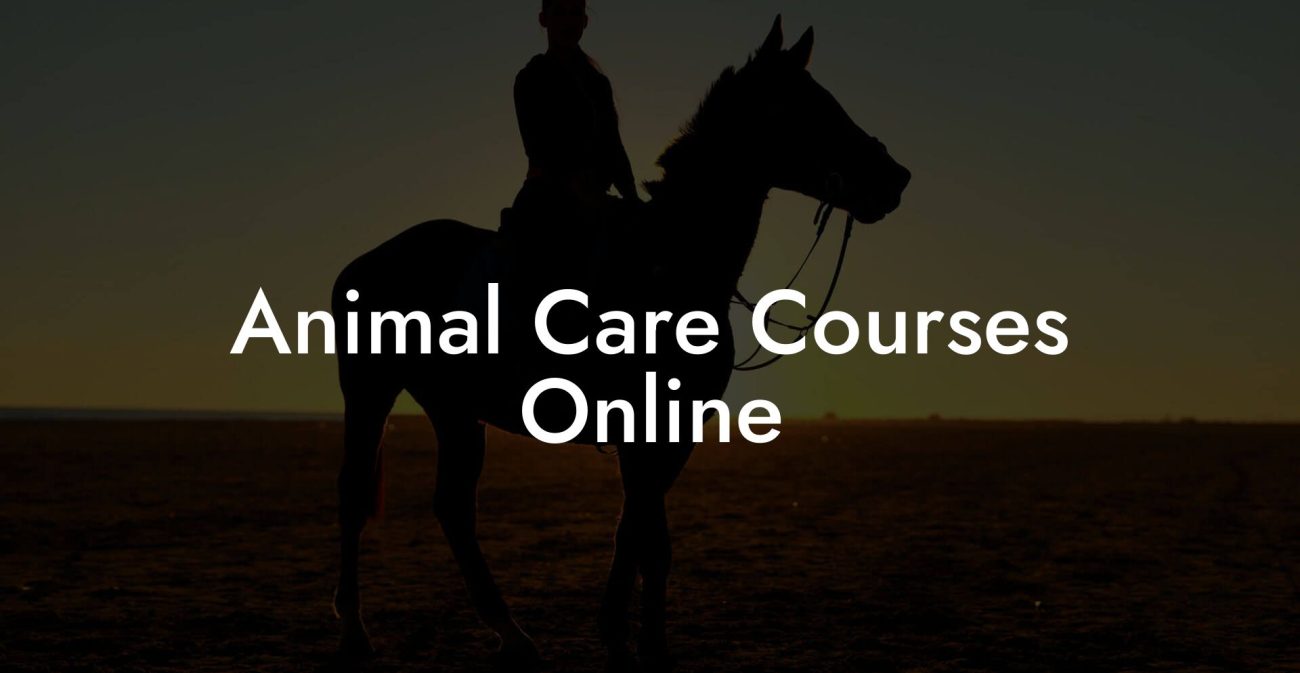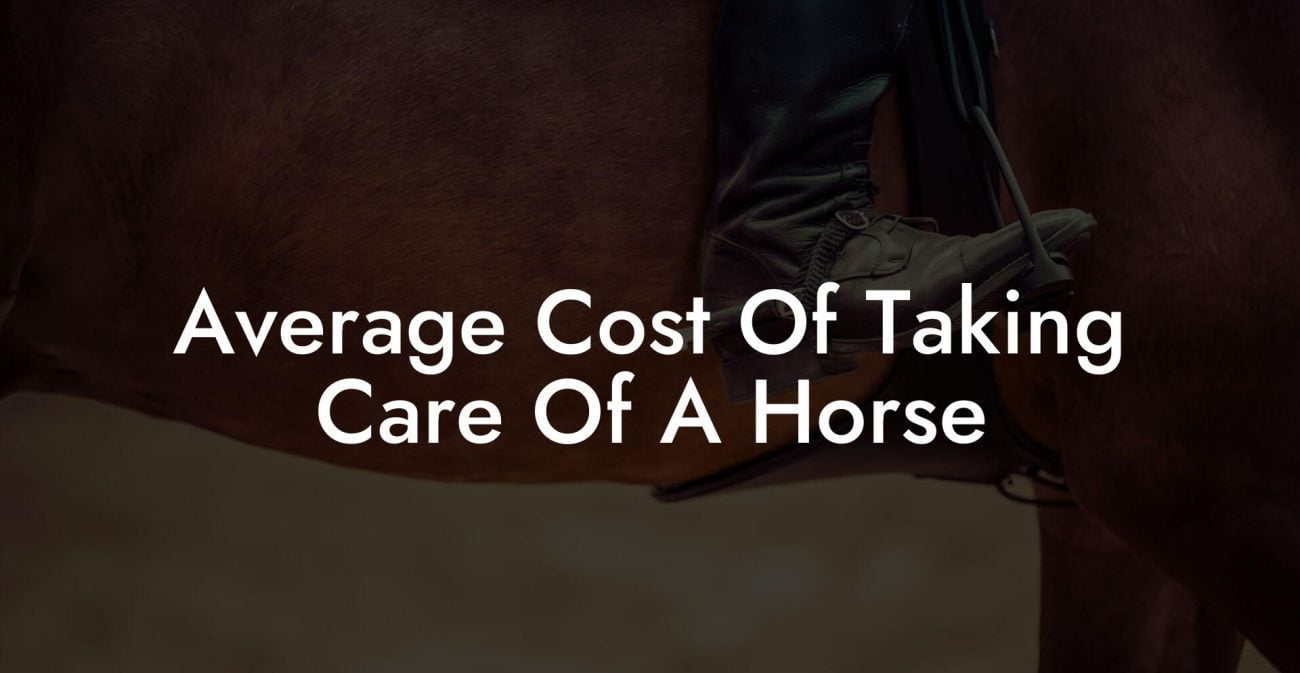riding a Quarter Horse isn’t just about hopping onto a four-legged friend and cruising into the sunset—it’s about diving headfirst into a lifestyle steeped in legacy, energy, and a bit of cowboy cool that even the most modern, internet-savvy rider can appreciate. Whether you're a Gen-Z equestrian enthusiast or a millennial adventurer looking to blend traditional care with a futuristic edge, Quarter horse care is an immersive journey. Get ready for a deep dive into everything from tailored nutrition plans and advanced grooming hacks to the best riding exercises and emergency veterinary tips that will keep your trusty steed performing at its peak.
Quick Links to Useful Sections
- The Quarter Horse Phenomenon: Why They’re the Ultimate Ride
- Understanding Your Quarter Horse: The Foundation of Great Care
- Feeding Your Quarter Horse: Nurturing Through Nutrition
- Quality Forage and Hay
- Grain and Concentrates: More Than Just Energy Boosters
- Water: The Elixir of Life
- Supplements and Treats: Enhancing Performance and Palatability
- Grooming and Maintenance: Keeping Your Horse in Top Form
- Daily Grooming Rituals
- Hoof Care: The Unsung Hero
- Bathing and Coat Care
- Exercise and Fitness: Keeping the Quarter Horse Agile and Strong
- Warm-Ups and Cool-Downs: The Essentials
- Interval Training and Sprint Drills
- Trail Riding and Free-Flow Movement
- Quarter Horse Health and Veterinary Care: Safeguarding Longevity
- Preventative Health Measures
- Dental and Vision Care
- Emergency Protocols and Chronic Condition Management
- Stable Management and Environmental Enrichment
- Designing a Modern, Eco-Friendly Stable
- Pasture Management and Exercise Areas
- Environmental Enrichment: Keeping Your Horse Mentally Engaged
- Training Techniques: Merging Tradition with Modern Methods
- Foundational Training: Establishing Trust and Communication
- Advanced Drills and Performance Training
- Integrative Wellness: Combining Traditional Vet Care with Modern Innovations
- Holistic Therapies for Equine Well-Being
- Technology-Driven Health Monitoring
- Common Health Challenges and How to Overcome Them
- Colic and Digestive Upsets
- Joint and Muscular Issues
- Respiratory and Allergic Reactions
- Resources and Community Support: Your Next Steps
- Frequently Asked Questions About Quarter Horse Care
- Your Journey to a Thriving Quarter Horse Lifestyle
The Quarter Horse Phenomenon: Why They’re the Ultimate Ride
Quarter Horses are more than just a breed—they’re an icon of versatility, speed, and rugged charm. Originally bred for sprinting short distances, these horses have evolved into the go-to companion for rodeo events, trail rides, and even cutting-edge western competitions. With their compact build, agile maneuvering, and a temperament that’s as spirited as it is reliable, Quarter Horses have captured the hearts of riders globally.
In today’s world, where speed, adaptability, and authenticity matter, choosing a Quarter Horse means embracing a legacy that’s compatible with both rural horsemanship and modern urban equestrian trends. This guide is designed to help you tailor your care regimen for your Quarter Horse while embracing a lifestyle that’s as dynamic and forward-thinking as you are.
From the latest in organic feed trends and eco-friendly stable setups to high-tech monitoring of your horse’s performance, our comprehensive approach integrates traditional wisdom with innovative insights—creating a balanced, holistic method to Quarter Horse care that resonates with your lifestyle.
Understanding Your Quarter Horse: The Foundation of Great Care
Knowing your horse is the first step in establishing a care plan that truly works. Quarter Horses are known for their muscular build and explosive power, but they’re also sensitive creatures that thrive on routine and human connection. Think of your Quarter Horse as a blend of classic Americana and modern athleticism—it needs fitness, nourishment, social interaction, and, yes, a bit of pampering.
Understanding the breed’s history can inspire you to provide more tailored care. Originating in the American West over 300 years ago, Quarter Horses were originally utilized for quick and agile performances in short races. Their speed and stamina turned them into indispensable assets in ranching and rodeo sports. And while the demands on your horse might differ today from those on horses of old, the principles of good care—balanced nutrition, regular exercise, and preventative healthcare—remain timeless.
By appreciating your horse’s background and unique physical traits, you can better adapt your care practices to enhance its performance, longevity, and overall quality of life. Whether you're an experienced rider or a new enthusiast, this section will pave the way for a holistic understanding of your Quarter Horse’s personality, energy, and inherent needs.
Feeding Your Quarter Horse: Nurturing Through Nutrition
Nutrition is the cornerstone of any robust equine care plan, and this is especially true for the active and agile Quarter Horse. To maintain peak performance, your horse requires a carefully balanced diet that mirrors its natural instincts while catering to modern health standards.
Quarter Horses have digestive systems that are uniquely sensitive. The trend nowadays is toward high-quality, whole-food diets with a focus on locally sourced, organic ingredients. Whether you're incorporating premium hay, grain alternatives, or safe treats like apples and carrots, every feeding decision influences your horse’s energy levels, coat shine, and digestive health.
Quality Forage and Hay
The backbone of your Quarter Horse’s diet should be high-quality forage. Look for lush, green hay that’s free from dust and mold. Research shows that grass-fed hay not only improves digestion but also keeps your horse’s weight under control—a key factor given the breed’s muscular frame.
Modern feeding practices stress the importance of variety. Rotating different types of grass hay can mimic natural grazing patterns and keep your horse’s digestive system primed for optimal nutrient absorption. And let’s not forget about the benefits of free-choice hay feeding, which encourages your horse to eat at a natural rhythm.
Grain and Concentrates: More Than Just Energy Boosters
While quality hay sets the stage, grains play a supporting role in your Quarter Horse’s energy management. Look for formulations that are rich in probiotics and prebiotics to enhance gut health. Many modern equine nutritionists recommend blends that incorporate slower-digesting carbohydrates, aiding in steady energy release instead of those sudden spikes.
For those horses pushed by regular strenuous activity or a heavy training schedule, specialized premixed feeds are a boon. Not only do these provide essential vitamins and minerals, but they’re also formulated to support muscle repair and reduce recovery time.
Water: The Elixir of Life
Hydration is often the overlooked hero in equine care. Your Quarter Horse needs constant access to fresh, clean water—especially after long rides or training sessions. Invest in a reliable water system for your stable, and consider adding electrolytes during intense periods of exertion.
Regular monitoring of water intake is crucial. Dehydration, even slight, can lead to colic and other digestive issues. Reinforcing the importance of hydration is a simple yet essential step in ensuring that your horse remains balanced and energized.
Supplements and Treats: Enhancing Performance and Palatability
The world of equine supplements is booming with options from joint support to digestive aids. For your Quarter Horse, focus on those that offer a natural, holistic boost—think omega fatty acids, vitamin E, and biotin for a healthy, shiny coat. Equine probiotics are also finding their way into feed buckets, promoting gut health and enhancing overall nutrient absorption.
And while treats should never replace a balanced diet, they can play a supportive role. Use them strategically as rewards during training or simply as a midday pick-me-up to strengthen the bond between you and your four-legged friend.
Grooming and Maintenance: Keeping Your Horse in Top Form
Grooming isn’t just about aesthetics; it’s a vital component of Quarter Horse care that contributes to overall health. Whether your style is a spa-day ritual or a quick daily brush-down, regular grooming can uncover hidden issues, from skin irritations to wound infections, before they become serious.
Daily Grooming Rituals
Establish a daily routine that includes brushing, hoof cleaning, and checking for any signs of injury or unusual behavior. Opt for eco-friendly grooming products that cater to sensitive skin—think natural shampoos, conditioners, and soothing sprays. A thorough grooming session not only maintains a sleek and shiny coat but also acts as a meditative bonding time. And let’s face it—there’s something almost zen about the rhythmic motion of a well-loved brush on a contented horse.
Hoof Care: The Unsung Hero
The health of your Quarter Horse starts at the ground up—literally. Regular hoof care is imperative to prevent conditions like thrush or laminitis. It’s recommended to clean the hooves daily and schedule professional farrier visits at least every 4-6 weeks. This routine ensures that hooves are balanced, trimmed, and reflective of your horse’s activity level and landing patterns.
In a modern twist on traditional hoof care, some owners are integrating new biometric tools for assessing hoof health. Smart insoles and thermal imaging devices are even being used in some circles, proving that the fusion of tradition and innovation can be a game-changer.
Bathing and Coat Care
Whether it’s a dusty day on the trail or the aftermath of a hard training session, a good once-over with a hose and a gentle shampoo helps wash away sweat, dirt, and allergens. It’s not about turning your horse into a perfume commercial model but rather about maintaining a natural glow and preventing skin conditions. Rinse thoroughly, and go easy on the frequency to avoid stripping away natural oils.
Modern equine care trends also spotlight the value of using moisturizing coats and sprays that help condition hair and protect against environmental stressors. After all, a well-groomed horse reflects the love and effort you put into its care.
Exercise and Fitness: Keeping the Quarter Horse Agile and Strong
Just like us, our equine companions thrive on movement. Quarter Horses are built for agility and power. Proper exercise not only builds their muscles but also keeps their minds sharp. Maintaining a balanced, dynamic exercise routine is one of the pillars of comprehensive Quarter Horse care.
Warm-Ups and Cool-Downs: The Essentials
Every session, whether it’s a spirited trail ride or a focused training drill, should start with a proper warm-up to gradually increase the horse’s heart rate and test its readiness. Think of it as your horse’s version of a Spotify pre-workout playlist—it gets the muscles moving and prevents injuries. At the end of the ride, cool-down sessions are just as vital to prevent stiffness and promote recovery.
Interval Training and Sprint Drills
Quarter Horses, famous for their speed in short bursts, greatly benefit from interval training. Short, intense sprints followed by calm recovery periods simulate natural patterns of movement and build explosive power. These drills can be integrated into regular riding sessions and supplemented with structured workouts that focus on agility.
Combine these workouts with core and balance exercises to support the horse's overall strength. Innovative trainers now suggest combining natural ground work with modern techniques, using courses that incorporate cones, poles, and even lightweight hurdles designed specifically for equine athletes.
Trail Riding and Free-Flow Movement
Sometimes, the best exercise is simply letting your Quarter Horse explore. Trail rides in diverse terrains not only work different muscle groups but also provide mental stimulation and stress relief. Knowing that their environment is safe and stimulating boosts a horse’s confidence and overall well-being. For riders, it’s about merging the sense of adventure with the deep-rooted connection between human and horse.
As you blend these exercise regimens into your routine, you’re not just training a horse—you’re nurturing a high-performance athlete built on trust, care, and modern innovation.
Quarter Horse Health and Veterinary Care: Safeguarding Longevity
Without proactive health management, even the most well-cared-for Quarter Horse can face issues that diminish its quality of life. Regular equine veterinary care is a non-negotiable cornerstone of holistic Quarter Horse care. Like any modern wellness routine, routine check-ups, vaccinations, dental care, and early diagnostic screenings are essential.
Preventative Health Measures
Preventative care doesn’t stop at annual vaccinations—it’s an ongoing process. Regular deworming schedules, vaccinations, and parasite control programs are all integral to keeping your horse healthy. Collaborate closely with your veterinarian to develop a schedule that suits the unique needs of your Quarter Horse, taking into account its age, activity level, and environment.
Modern practices are increasingly leaning towards integrated health care systems where digital health records and remote monitoring can give you real-time insights into your horse’s condition. This seamless blend of technology and care ensures you’re always one step ahead of potential issues.
Dental and Vision Care
Just as we schedule dental check-ups, horses need regular dental assessments to prevent pain and eating difficulties. Overgrown teeth can lead to malnutrition and other health problems. Schedule bi-annual dental visits to keep your horse’s bite in top shape.
While vision is often overlooked in equine care, it’s paramount for a horse that is active both on the trails and in competitive arenas. Your vet should check your horse’s eyes during regular check-ups, ensuring that it catches every detail of the breathtaking scenery and performs flawlessly during competitions.
Emergency Protocols and Chronic Condition Management
No matter how well you care for your horse, emergencies can occur. Having a clear, well-rehearsed emergency plan is critical—this includes knowledge of the nearest veterinary clinics, having a stocked first-aid kit, and understanding the signs of common equine emergencies like colic or laminitis. Familiarize yourself with your veterinarian's emergency protocols, and consider subscribing to an app that tracks equine health markers in real time.
Additionally, if your Quarter Horse faces chronic conditions such as joint issues or recurrent respiratory infections, it’s important to work closely with professionals to create a comprehensive management plan. This plan should combine traditional medicine with emerging holistic practices, ensuring that your horse remains comfortable, strong, and thriving.
Stable Management and Environmental Enrichment
The environment in which your Quarter Horse lives profoundly impacts its physical and emotional well-being. A well-managed stable isn’t just a roof over your horse—it’s a sanctuary that provides safety, stimulation, and a sense of belonging.
Designing a Modern, Eco-Friendly Stable
Many modern equine enthusiasts are embracing smart stable designs that prioritize both the horse and the planet. Natural lighting, proper ventilation, and eco-friendly materials aren’t just trendy; they contribute to reducing stress and improving overall health. Consider incorporating solar-powered lighting and biodegradable bedding, which not only cuts costs but also reduces your environmental footprint.
Integrating technology into your stable management can further enhance your horse’s living conditions. Apps that monitor temperature, humidity, and even noise levels enable you to maintain an optimal environment at all times. A horse that sleeps in a balanced, comfortable stable is more likely to be energetic, focused, and content.
Pasture Management and Exercise Areas
Foraging naturally is as vital to a Quarter Horse’s well-being as structured exercise routines. A well-maintained pasture filled with varied flora provides mental stimulation and vital nutrition. Rotate grazing areas to ensure the soil remains fertile and to prevent overgrazing, which can lead to health issues.
Moreover, designing dedicated exercise zones—whether inside the stable area or outdoors—can provide safe spaces for your horse to run, play, and interact socially with other horses. These areas can be equipped with natural obstacles or innovative, low-impact workout equipment that echoes modern fitness trends.
Environmental Enrichment: Keeping Your Horse Mentally Engaged
Horses, like humans, benefit from a stimulating environment. Toys, puzzles, and varied textures can occupy your horse’s mind when they’re not out on a ride. Equine enrichment tools can range from simple hanging balls to more interactive devices that challenge their cognitive skills. This mental stimulation lowers stress levels and fosters a stronger bond between you and your horse.
Incorporate safe, natural elements such as logs, varied terrain, and gentle water features in your pasture design. A happy, engaged horse is a healthier, more resilient one—and it shows in its performance, mood, and overall vitality.
Training Techniques: Merging Tradition with Modern Methods
Training your Quarter Horse is as much about nurturing a strong bond as it is about teaching commands and techniques. Modern training approaches combine time-tested methods with innovative, technology-driven tools to create a learning environment that’s engaging for both horse and rider.
Foundational Training: Establishing Trust and Communication
The journey towards an impeccably trained horse starts with building trust. Spend time engaging in groundwork, where you let your horse explore, interact, and learn at its own pace. This nurtures a natural rapport that sets the stage for more advanced riding lessons. Use rewards and positive reinforcement—think of it as the horse equivalent of social media likes—to celebrate small wins and build confidence.
Many trainers now blend classical techniques with the use of wearable technology. Tracking devices that measure the horse’s heart rate, stride pattern, and overall performance can provide insights that transform training sessions from guesswork into data-driven success.
Advanced Drills and Performance Training
Once the basics are mastered, it’s time to up the ante. Incorporate advanced drills that challenge your horse’s agility, speed, and reflexes. Whether it’s jump training, lateral work, or intricate maneuver exercises, modern approaches emphasize a mix of physical conditioning and mental stimulation. In these sessions, using video analysis apps can help you fine-tune techniques, offering immediate feedback that further strengthens your connection with your horse.
Remember, effective training isn't about rigid routines—it’s about adapting to your horse’s mood, energy level, and unique personality. Engage in sessions that feel less like lessons and more like playful, trust-building exercises. This modern perspective on training keeps your Quarter Horse excited and less stressed, fostering an environment where both growth and enjoyment go hand in hoof.
Integrative Wellness: Combining Traditional Vet Care with Modern Innovations
In recent years, the equine care landscape has shifted to meld the best of both worlds—conventional veterinary practices are now enhanced with modern, integrative wellness techniques that consider not just physical healing, but also mental and emotional balance.
Holistic Therapies for Equine Well-Being
Acupuncture, therapeutic massage, and even equine chiropractic care are gaining ground as valuable additions to a traditional healthcare regimen. These treatments help alleviate issues like muscle stiffness, joint pain, and stress-induced tension while promoting better circulation and faster recovery. Modern owners are increasingly turning to holistic therapies to complement routine veterinary check-ups.
In addition, nutritional consultations where experts tailor supplements and dietary changes to a horse’s activity level and specific needs are now mainstream. By integrating targeted nutritional support with physical therapies, you can ensure your Quarter Horse isn’t just surviving—but thriving.
Technology-Driven Health Monitoring
Imagine monitoring your horse’s health via smart devices that track biometric data in real time. From wearable fitness trackers to sensors that measure body temperature and heart rate, technology is playing a pivotal role in modern equine veterinary care. These gadgets not only provide early warnings of potential health issues but also give you reassurances that your horse’s wellness is being consistently monitored.
Embracing these innovations can optimize health outcomes while simplifying the process of routine health maintenance. It’s the perfect marriage of old-school care ethics with the benefits of modern technology—a win-win for both you and your Quarter Horse.
Common Health Challenges and How to Overcome Them
Even the best-cared-for Quarter Horses can encounter common health challenges from time to time. Recognizing the signs early, understanding the available solutions, and preventing future issues is fundamental to comprehensive care.
Colic and Digestive Upsets
Colic is one of the most dreaded emergencies in equine care. While maintaining proper feeding schedules and hydration helps prevent such episodes, it’s crucial to know the early symptoms—restlessness, bloating, and elevated heart rate. Familiarize yourself with immediate actions and have your vet’s contact readily available.
In today’s connected world, several apps and smart monitoring systems offer early preview signals of digestive distress. They work hand in hand with traditional practices like administering anti-colic medications and ensuring that diets remain consistent in quality and quantity.
Joint and Muscular Issues
The Quarter Horse’s athletic prowess can sometimes lead to joint strain and muscular injuries, particularly after high-intensity work. Preventative measures include regular stretching, controlled exercise routines, and the use of supportive supplements such as glucosamine and chondroitin. Incorporating therapies like hydrotherapy or equine acupuncture can also provide relief.
With the advancement of modern physiotherapy tools, monitoring recovery and tracking improvement has never been easier. Digital tools nowadays let you log workout sessions and track progress, ensuring that you’re always ahead of any potential lameness or discomfort.
Respiratory and Allergic Reactions
Quarter Horses are occasionally prone to respiratory issues, particularly if stabled in dusty conditions or exposed to strong allergens. Utilizing air purifiers in stables, proper ventilation, and routine cleaning practices can significantly reduce these risks. From modern aerosol treatments to natural herbal supplements, there’s a spectrum of solutions to keep your horse breathing easy.
Regular assessments with your veterinarian can help tailor a plan addressing specific allergies or respiratory sensitivities, ensuring that your horse maintains not only peak physical performance but also optimal respiratory health.
Resources and Community Support: Your Next Steps
Navigating the ins and outs of Quarter Horse care can feel overwhelming at times, but you’re not alone on this journey. The equine community is vibrant, diverse, and ready to lend a helping hand. Today’s digital landscape offers countless blogs, forums, social media groups, and online courses taught by industry experts dedicated to equine health.
Consider joining online communities on platforms like Instagram, TikTok, or specialized equine forums where you can swap stories, tips, and even hilarious mishaps with fellow Quarter Horse enthusiasts. These communities are invaluable for staying updated on the latest trends in nutrition, grooming, and training while also providing emotional support when challenges arise.
Look into local equestrian events, webinars, and even hands-on clinics designed for modern horse care. Many of these events feature thought leaders who bridge traditional techniques with innovative strategies, offering you insights that are both practical and cutting-edge.
Finally, don’t underestimate the power of connecting with professionals. Whether it’s a trusted veterinarian, a passionate farrier, or an experienced trainer, building a network of experts enriches your approach to Quarter Horse care. They can provide personalized advice, troubleshoot problems early, and guide you through every stage of your horse’s life.
Frequently Asked Questions About Quarter Horse Care
The world of Quarter Horse care is as diverse as the horses themselves. Here are some of the top questions that come up among the community:
1. What makes Quarter Horses different from other horse breeds?
Quarter Horses are known for their speed, agility, and compact build. Originally bred for short sprints and ranch work, they carry a legacy of versatility and resilience, making them ideal for a variety of equestrian disciplines.
2. How often should I feed and water my Quarter Horse?
A balanced diet with high-quality forage should be provided ad libitum, while grains and concentrates are given in controlled portions based on activity levels. Fresh, clean water should be available all day, and hydration should be especially monitored during exertion.
3. What grooming practices are essential for maintaining my horse’s health?
Daily brushing, routine hoof cleaning, and regular assessments for skin irritations are key. In addition, periodic bathing with natural, horse-friendly shampoos and scheduled farrier visits are critical components of a robust grooming regimen.
4. How do I know if my Quarter Horse is over-exercised or at risk of injury?
Look out for signs like unusual stiffness, reluctance to move, or changes in gait. Integrating tech-based monitoring devices along with traditional assessments from your trainer or veterinarian can help pinpoint early signs of fatigue or injury.
5. Can technology really improve the care of my Quarter Horse?
Absolutely. From smart monitoring devices that track vital signs to apps that log exercise routines and nutrition, modern technology is revolutionizing how we care for and understand our horses.
6. What are the best strategies for preventing colic or digestive issues?
Consistency in feeding, providing high-quality forage, and ensuring constant access to clean water are foundational. Regular vet check-ups and gradual changes in diet help prevent colic and other digestive issues.
7. How can I integrate holistic therapies into my horse care routine?
Consider incorporating practices such as acupuncture, massage therapy, or equine chiropractic care alongside regular veterinary treatments. These therapies can help improve circulation, reduce muscle tension, and promote overall wellness.
8. Where can I learn more about modern Quarter Horse care techniques?
There are numerous online resources including specialized equine care blogs, equestrian social media groups, webinars, and local equestrian events. Networking with experienced trainers, veterinarians, and other horse enthusiasts is also a great way to stay informed.
9. How do I manage my horse’s exercise routine during extreme weather?
Adjust your training schedule to avoid extreme heat or cold. Use indoor arenas or shaded areas when necessary, and always monitor your horse for signs of weather-related stress. Proper hydration and a tailored exercise plan can help mitigate these risks.
10. What are some modern trends in equine nutrition and stable management?
Modern trends include organic, locally sourced feed, eco-friendly stable designs, and the integration of technology in monitoring stable conditions. These innovations help create a well-rounded, sustainable care plan for Quarter Horses.
Your Journey to a Thriving Quarter Horse Lifestyle
Caring for a Quarter Horse is an art, a science, and an adventure rolled into one. As you blend legacy practices with modern innovations, remember that each decision you make—whether it's choosing the right feed, scheduling that extra farrier visit, or experimenting with a new training routine—shapes the quality of life for your horse and enriches your own journey as an equine guardian.
Embrace the holistic approach to Quarter Horse care by integrating cutting-edge technology with time-tested methods. Stay informed through community resources, remain adaptable to new information, and most importantly, enjoy every moment of the journey. A thriving Quarter Horse is more than a showpiece—it’s a vibrant companion on the trail to excellence, one that mirrors your own dynamic, innovative spirit.
Whether you’re updating your stable with eco-friendly solutions, exploring advanced nutrition, or pioneering new training techniques that merge tradition with technology, your commitment sets a standard for modern equine care. Your horse’s wellbeing, performance, and happiness are a testament to your passion and drive—an inspiring blend of old-school grit and new-age savvy.
Step up your game, celebrate your horse’s individuality, and keep exploring the evolving world of Quarter Horse care. Your journey is just beginning, and every stride, every grooming session, and every gallop on new trails contributes to a story of resilience, innovation, and above all, a deep bond between rider and horse. Here’s to a future where both of you flourish together in a legacy of care, community, and endless adventure!













